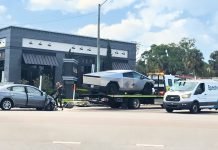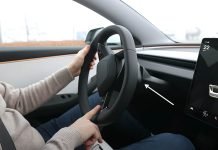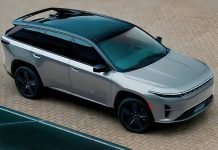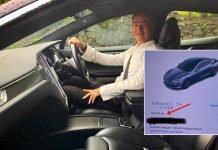A suspension issue has caused Tesla reportedly recall close to 30,000 vehicles exported to China. The Californian automaker has issued the recall yesterday, with as many as 29,193 vehicles falling in the criteria. These vehicles are either Model S’s or Model X’s and were all manufactured in the period from September 17th, 2013 to August 16th, 2017. China’s State Administration for Market Regulation disclosed the news in an announcement yesterday.
Tesla Recalls Model S/Model X Exported To China Over Suspension Problem
The Problem
The problem can be defined in simple words as a weakness in the suspension that can lead to a cracked linkage after a large impact. The issue is prevalent in both front as well as rear suspension of the vehicles. Here is a more technical explanation of the problem:
When the vehicles within the scope of this recall are subjected to large impact, the ball studs of the rear connecting rod of the front suspension will develop cracks. If the owners continue using the car, the cracks will widen and cause the ball stud to break. The ball-end cone seat may come out of the steering knuckle in extreme cases. Similarly, the upper connecting rod of the rear suspension will deform if subjected to heavy impact. This will weaken the component if the owner keeps driving the car. Both of these issues can affect the control of the vehicle, increase the risk of accidents, and pose as a safety hazard. [Translated from Chinese]
Tesla’s Plan for the recall
Tesla has recalled a total of 29,193 vehicles that were exported to China during the four-year period mentioned before. They will reportedly be making changes to these linkages, and all component changes will be done for free. Tesla Beijing is going to notify all affected owners that they can drive their cars, albeit carefully, until the components are changed. It seems kind of strange that Tesla is recalling only the exported vehicles, as they have not summoned those cars sold in the USA during the same period. This has led us to believe that there is something fishy at play, and sure enough, Tesla went public with the issue as well.
Tesla blames China
Tesla is now blaming China, saying that they are calling for an unnecessary recall. They are saying that there is no real defect with the suspension system. Elizabeth H. Mykytiuk, Tesla’s managing counsel for regulatory affairs, has written a letter to NHTSA (National Highway Traffic Safety Administration). In the letter, Mykytiuk alleged that China forced Tesla to issue the recall and that there is no defect in the vehicle design.
Apparently, the SAMR/DPAC left Tesla with two options – issue a recall, or go through the heavy burden of the Chinese administrative process. Tesla does not agree with the opinion of SAMR/DPAC. They have decided not to dispute the decision, though. In fact, Mykytiuk has blamed the issue on the drivers. She said that Tesla believes that the two linkages mentioned before are not at fault. Driver usage and expectation for damageability in severe specifically in China. Abusive loads like curb impact and severe pothole strike are the major cause for the damage to the parts. This damage leads to either immediate failure or delayed failure, caused by compounding effects of the input. Tesla also stated that just 0.05% of vehicles outside China experience this failure, while in China, it affects 0.1% vehicles.
Personal Opinion
People need to note down two things main things here. Firstly, the data suggests that the issue is twice as frequent in Chinese cars than non-Chinese cars. This means that there is some factor outside of Tesla which is causing the problem. No wonder they were blaming the driver usage and road conditions.
Secondly, Tesla has issued the recall only for those cars manufactured before 2017. This means that they made certain changes to the suspension design in 2017, and these changes do not seem to affect the Chinese authorities. Does this mean that Tesla did realise an issue, and decided to quietly act on it? And if this is true, then what is the change that they have made?
Interestingly enough, the NHTSA had investigated a suspension problem in Tesla vehicles back in 2016. It had begun when a blog described a pattern of suspension failures in Tesla vehicles. At that time, the authorities found that most of the registered complaints were fraudulent or misleading. Tesla also accused the blog owner of wanting to make financial gains through such reports. The NHTSA dismissed the case later.
The whole incident seems a little fishy. The NHTSA investigated Tesla in 2016 and found nothing. Then, in 2017, Tesla apparently made a change to the suspension design. The new design seems to be okay, but Chinese authorities have a problem with the earlier design. And now, they are forcing Tesla to recall as many as 30,000 vehicles. Suspension components tend to fail under heavy impact, so it seems strange that Tesla has to recall cars because of that. Tesla has not commented officially on the matter yet, and once that happens, it will clarify a lot of things.


















